
Quito, formally San Francisco de Quito, is the capital and most populous city of Ecuador, with an estimated population of 2.8 million in its urban area. It is also the capital of the province of Pichincha. Quito is located in a valley on the eastern slopes of Pichincha, an active stratovolcano in the Andes, at an elevation of 2,850 m (9,350 ft), making it the second-highest capital city in the world.
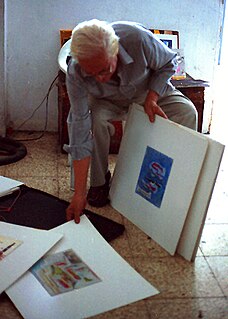
Luis Enrique Tábara was a master Ecuadorian painter and teacher representing a whole Hispanic pictorial and artistic culture.
Aníbal Villacís was a master painter from Ecuador who used raw earthen materials such as clay and natural pigments to paint on walls and doors throughout his city when he could not afford expensive artist materials. As a teenager, Villacís taught himself drawing and composition by studying and recreating the illustrated ad posters for bullfights in Quito. In 1952, Jose Maria Velasco Ibarra, former President of Ecuador, discovered Villacís and offered him a scholarship to study in Paris.
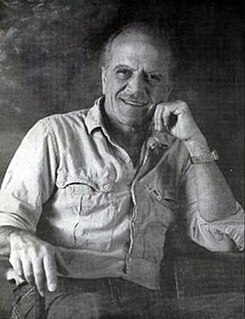
Rodolfo Abularach was a Guatemalan painter and printmaker of Palestinian descent.

The Museo Nacional de Arte (MUNAL) is the Mexican national art museum, located in the historical center of Mexico City. The museum is housed in a neoclassical building at No. 8 Tacuba, Col. Centro, Mexico City. It includes a large collection representing the history of Mexican art from the mid-sixteenth century to the mid 20th century. It is recognizable by Manuel Tolsá's large equestrian statue of Charles IV of Spain, who was the monarch just before Mexico gained its independence. It was originally in the Zocalo but it was moved to several locations, not out of deference to the king but rather to conserve a piece of art, according to the plaque at the base. It arrived at its present location in 1979.

Museo de la Naturaleza y Arqueología (MUNA), is a museum-based in Santa Cruz de Tenerife, Tenerife,. It contains many significant archaeological finds and is considered the best repository of objects from the Pre-Castilian Canary Islands. The museum also houses significant paleontological, botanical, entomological, and marine and terrestrial vertebrate collections, and is considered the best Natural Library of the Canary Islands.
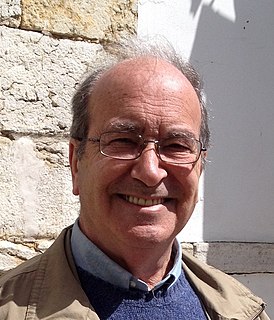
Juan Manuel Rodríguez López is a Spanish-born, naturalized Ecuadorian author and professor. He holds a licenciate/BA degree in philosophy and a doctorate in literature from Pontificia Universidad Católica del Ecuador (PUCE). He was a professor at Universidad Central del Ecuador and Universidad Católica, as well as a founding professor of Universidad San Francisco de Quito, where he was Dean of the College of Communication and Contemporary Arts.
Eduardo Estrella Aguirre was an Ecuadorian doctor and researcher who published Flora Huayaquilensis: The Botanical Expedition of Juan Tafalla 1799-1808.
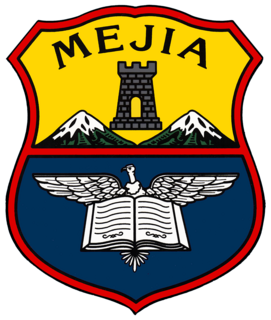
Instituto Nacional Mejía is a public secondary educational institution of Quito. It was founded on June 1, 1897 by Eloy Alfaro Delgado, then president of Ecuador.

The Museo Soumaya is a private museum in Mexico City and a non-profit cultural institution with two museum buildings in Mexico City — Plaza Carso and Plaza Loreto. It has over 66,000 works from 30 centuries of art including sculptures from Pre-Hispanic Mesoamerica, 19th- and 20th-century Mexican art and an extensive repertoire of works by European old masters and masters of modern western art such as Auguste Rodin, Salvador Dalí, Bartolomé Esteban Murillo and Tintoretto. It is called one of the most complete collections of its kind.
Nelson Estupiñán Bass (1912–2002) was born in Sua, a city in the predominantly Afro-Ecuadorian province of Esmeraldas in Ecuador. He was first homeschooled by his mother before traveling to the capital city of Quito where he graduated from Escuela Superior Juan Montalvo with a degree in public accounting in 1932. Bass identified with the Communist Party during this time and in 1934 had the opportunity to publish two of his poems in the socialist diary La Tierra.

Guillermo Ceniceros is a Mexican painter and muralist, best known for his mural work in Mexico City, as well as his figurative easel work. He began his mural painting career as an assistant to mural painters such as Federico Cantú, Luis Covarrubias and then David Alfaro Siqueiros who was a mentor and a key influence. Ceniceros is the most notable of Siqueiros' assistants. While he has experimented with abstract expression, his easel work mostly classifies as figurativism and is influenced by the geometrical construct of Mexican muralism. He has had over 300 individual and collective exhibitions in Mexico and the International stage. His work has been recognized by the Mexican Ministry of Culture and several of its institutions. He has painted over 20 large scale Mural Paintings with some of the most notable being the large scale work for the Legislative Palace of San Lazaro as well as his murals in the Metro Subway System. He is a member of the Salón de la Plástica Mexicana. In 1995, the State of Durango, Ceniceros' native state, opened to the public the Guillermo Ceniceros Art Museum within the oversight of the Ministry of Culture. Ceniceros has been reviewed by notable critics such as Berta Taracena, Raquel Tibol, Alaide Foppa, Graciela Kartofel, José Angel Leyva and Eduardo Blackaller among others. There are several publications about his work including a vast review of his art life endeavors developed by the Ministries of Culture of Durango and Nuevo León. He is married to the artist Esther González and lives in his studio house in the Colonia Roma of Mexico City.
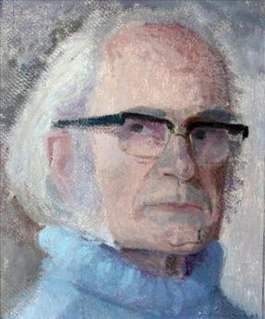
Guillermo Larrazábal Arzubide was a Spanish stained glass artist who was active in Ecuador. He is considered Ecuador's most important stained glass artist.

Alberto Mena Caamaño Museum is a museum in Quito, Ecuador. A cultural institution of Quito, the capital of Ecuador, it is located in the historic center of the city, next to the Palacio de Carondelet. The Rough Guide to Ecuador considers it to be the "old town's most rewarding museum".

San Juan de Dios Hospital was a hospital located in Quito, Ecuador. It was the first hospital founded in the city and was open from 1565 to 1974. It has been designated a UNESCO Cultural World Heritage Site. Since 1998, the building which housed the hospital has served as the City Museum of Quito and maintains a small permanent collection relating to the history of the hospital.

The Museo Leonora Carrington is a museum with venues in the San Luis Potosí City and Xilitla, state of San Luis Potosí, México; dedicated to the surrealist artist Leonora Carrington, the Museo Leonora Carrington San Luis Potosí opened 22 March 2018, with Juan Manuel Carreras as governor of the state. The museum houses a collection of the artist's sculptures, jewelry, engravings, and personal objects; and presents temporary exhibits about surrealism and works influenced by Carrington's work. The collection was donated by Pablo Weisz Carrington, son of the artist, for the creation of the museum.

The Pontevedra Museum,, is a museum in the Galician city of Pontevedra in Spain. It was founded by the Deputation of Pontevedra on 30 December 1927 and has six buildings for its exhibitions.

The Pumapungo Museum is an ethnographic and art museum in Cuenca, Ecuador.
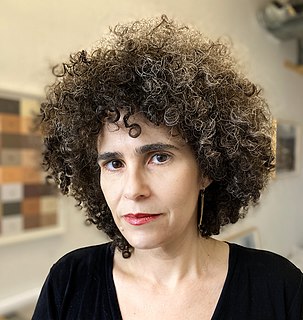
Karina Aguilera Skvirsky is a multidisciplinary artist based in New York, New York. Her work is held in the permanent collections of the Brooklyn Museum, the New York Public Library, the Art Institute of Chicago, and the Whitney Museum, among others. Working across video, performance, and photography, Aguilera Skvirsky addresses themes of migration, colonization, Latin American identity, and family history. Aguilera Skvirsky is best known for her performance video The Perilous Journey of María Rosa Palacios (2019).





















